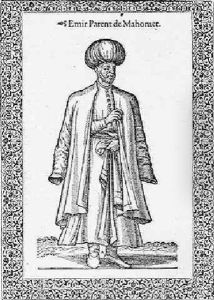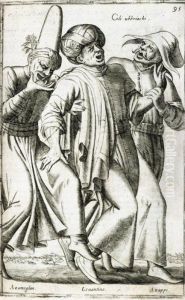Nicolas De Nicolay Paintings
Nicolas de Nicolay was a French geographer and cartographer, born in 1517 in La Grave, a small town in the Dauphiné region of France. He is best known for his role as the royal geographer to King Charles IX of France and for his pioneering work in ethnographic cartography. Nicolay's life and career were deeply intertwined with the age of exploration and the Renaissance period's growing interest in mapping the world and understanding its diverse cultures.
Nicolay embarked on his career in the service of the French crown in the mid-16th century. His extensive travels, particularly to the Ottoman Empire, were instrumental in the creation of his most famous work, 'Les Quatre Premiers Livres des Navigations et Peregrinations Orientales'. Published in 1568, this work contains detailed engravings and descriptions of the peoples and customs of the Mediterranean and Near East. These engravings, based on Nicolay's own observations and drawings, were among the first attempts to accurately depict the dress and habits of different cultures, making Nicolay a pioneer in the field of ethnographic illustration.
Aside from his contributions to cartography and ethnography, Nicolay's works had a significant influence on European perceptions of the Ottoman Empire and the broader Islamic world. His depictions of Turkish and other Middle Eastern peoples were circulated widely in Europe, contributing to a more nuanced understanding of these cultures during a time when relations between Christian Europe and the Islamic world were often fraught with conflict.
Despite his achievements, much of Nicolay's life remains shrouded in mystery, and his contributions to cartography and ethnography were somewhat overshadowed by contemporaries such as Gerardus Mercator and Abraham Ortelius. Nevertheless, his works remain a valuable window into the 16th-century Mediterranean world, offering insights not only into the geography of the region but also into its diverse cultures and peoples.
Nicolas de Nicolay passed away in 1583, leaving behind a legacy that is cherished by historians and geographers alike. His work continues to be studied for its historical value and its pioneering approach to the representation of cultural diversity through the lens of cartography and illustration.


